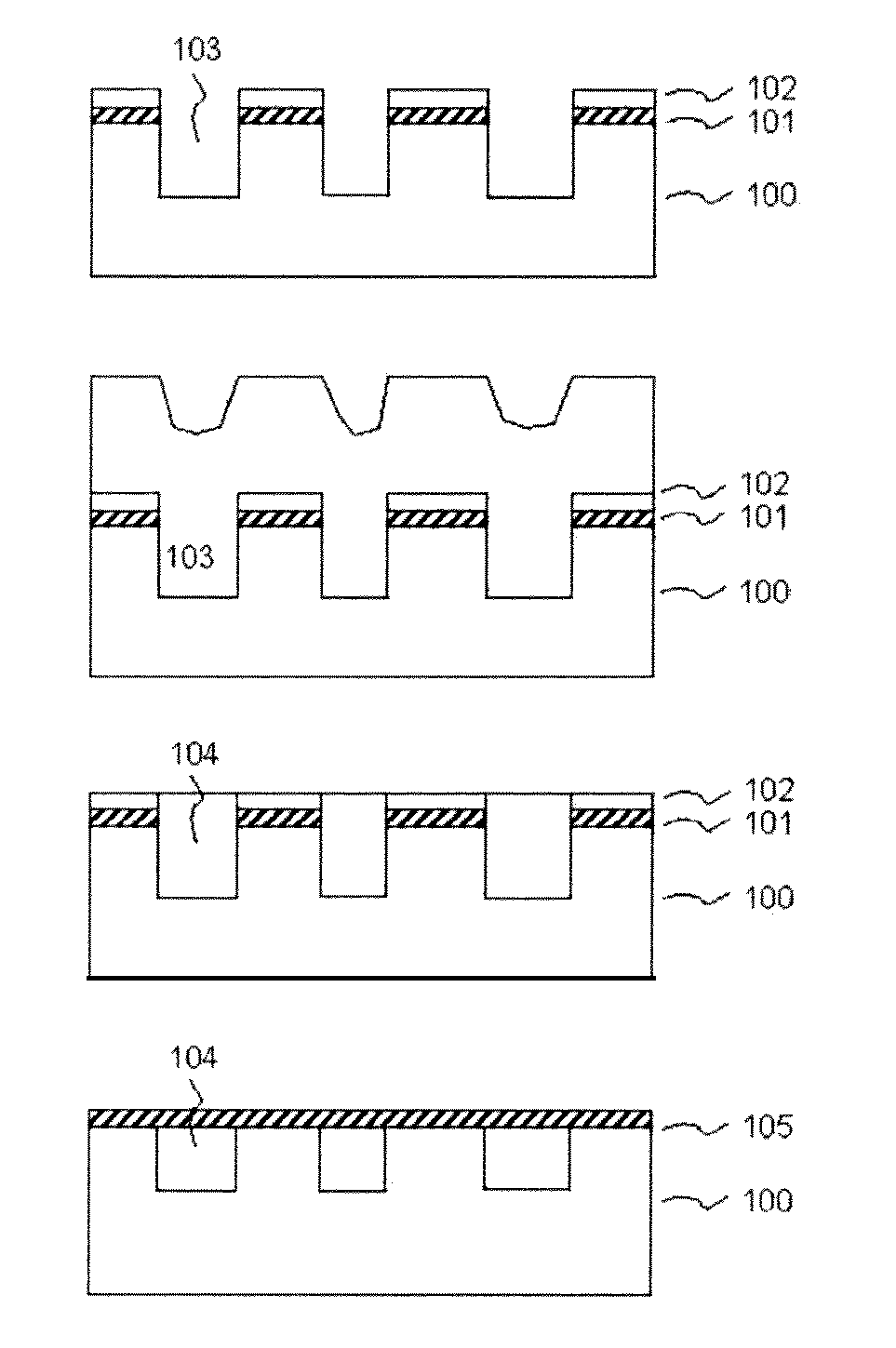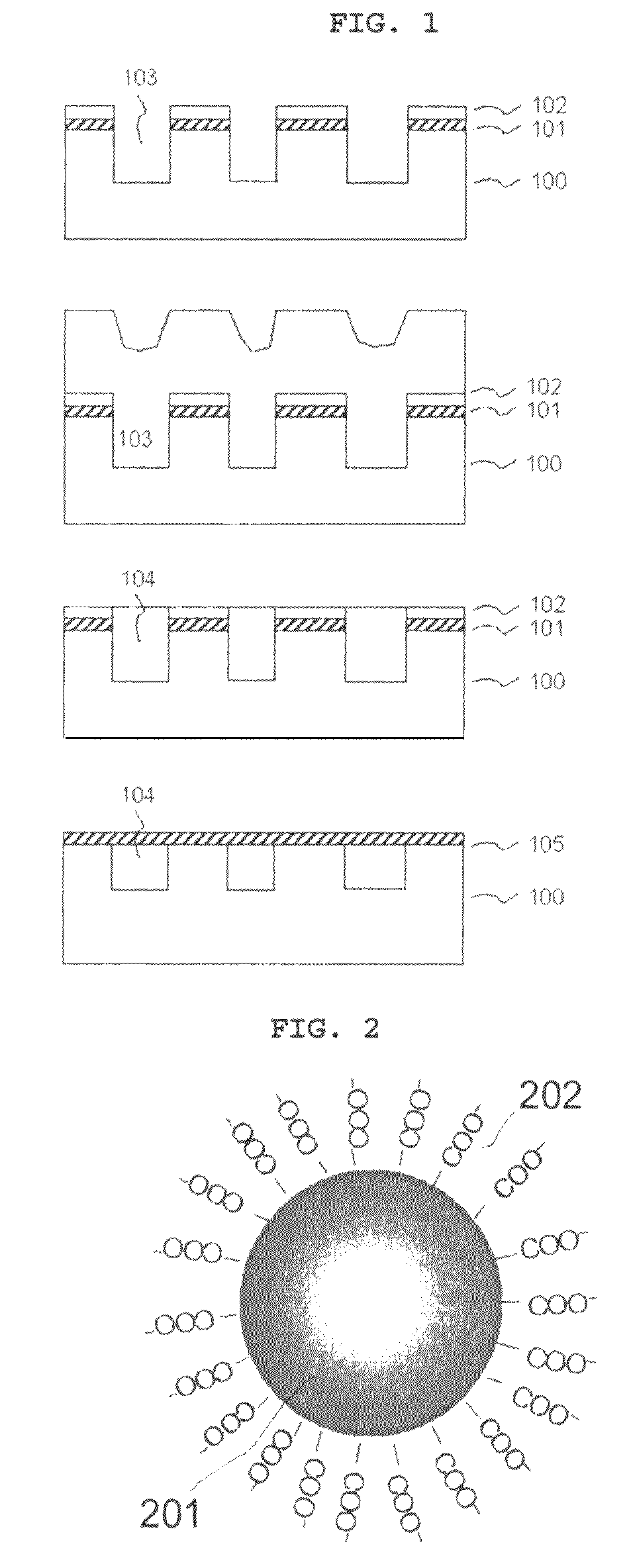Adjuvant for CMP slurry
a technology of mechanical polishing and adjuvant, which is applied in the direction of manufacturing tools, other chemical processes, chemistry apparatus and processes, etc., can solve the problems of reducing the margin of subsequent steps for manufacturing a semiconductor device, reducing the polishing selectivity of the insulating silicon oxide layer to the sin layer, and reducing the polishing selectivity of the anionically charged material. , to achieve the effect of effective restrainting the cationically charged material and increasing the polishing sel
- Summary
- Abstract
- Description
- Claims
- Application Information
AI Technical Summary
Benefits of technology
Problems solved by technology
Method used
Image
Examples
example 1
(1) Preparing Core-Shell Structure Polymer Particles
[0065]100 parts by weight of styrene as hydrophobic monomer, 5 parts by weight of acrylic acid as anionically charged hydrophile monomer, 0.05 part by weight of V65 initiator (2,2′-azobis (2,4-dimethylvaleronitrile)) and 4.0 part by weight of hexadecan as an ultrahydrophobe were mixed together. Then, the mixture was inputted into a solution obtained by dissolving 10 parts by weight of sodium lauryl sulfate into 300 parts by weight of deionized water. By using an ultrasonic aspirator, the mixed solution was treated for 5 minutes into a miniemulsion. Then, the miniemulsion was heated at a temperature ranging from 60° C. to 90° C. for 5 hours while being stirred slowly in a batch reactor (SBR) to cause polymerization.
[0066]Resultant polymer particles were centrifuged at 17,000 RPM for 2 hours by using a centrifugal machine (MEGA17R available from Hanil Science Industrial, Korea), and a sediment was re-dispersed into water. The aforeme...
PUM
| Property | Measurement | Unit |
|---|---|---|
| surface potential | aaaaa | aaaaa |
| size | aaaaa | aaaaa |
| wt % | aaaaa | aaaaa |
Abstract
Description
Claims
Application Information
 Login to View More
Login to View More - R&D
- Intellectual Property
- Life Sciences
- Materials
- Tech Scout
- Unparalleled Data Quality
- Higher Quality Content
- 60% Fewer Hallucinations
Browse by: Latest US Patents, China's latest patents, Technical Efficacy Thesaurus, Application Domain, Technology Topic, Popular Technical Reports.
© 2025 PatSnap. All rights reserved.Legal|Privacy policy|Modern Slavery Act Transparency Statement|Sitemap|About US| Contact US: help@patsnap.com


